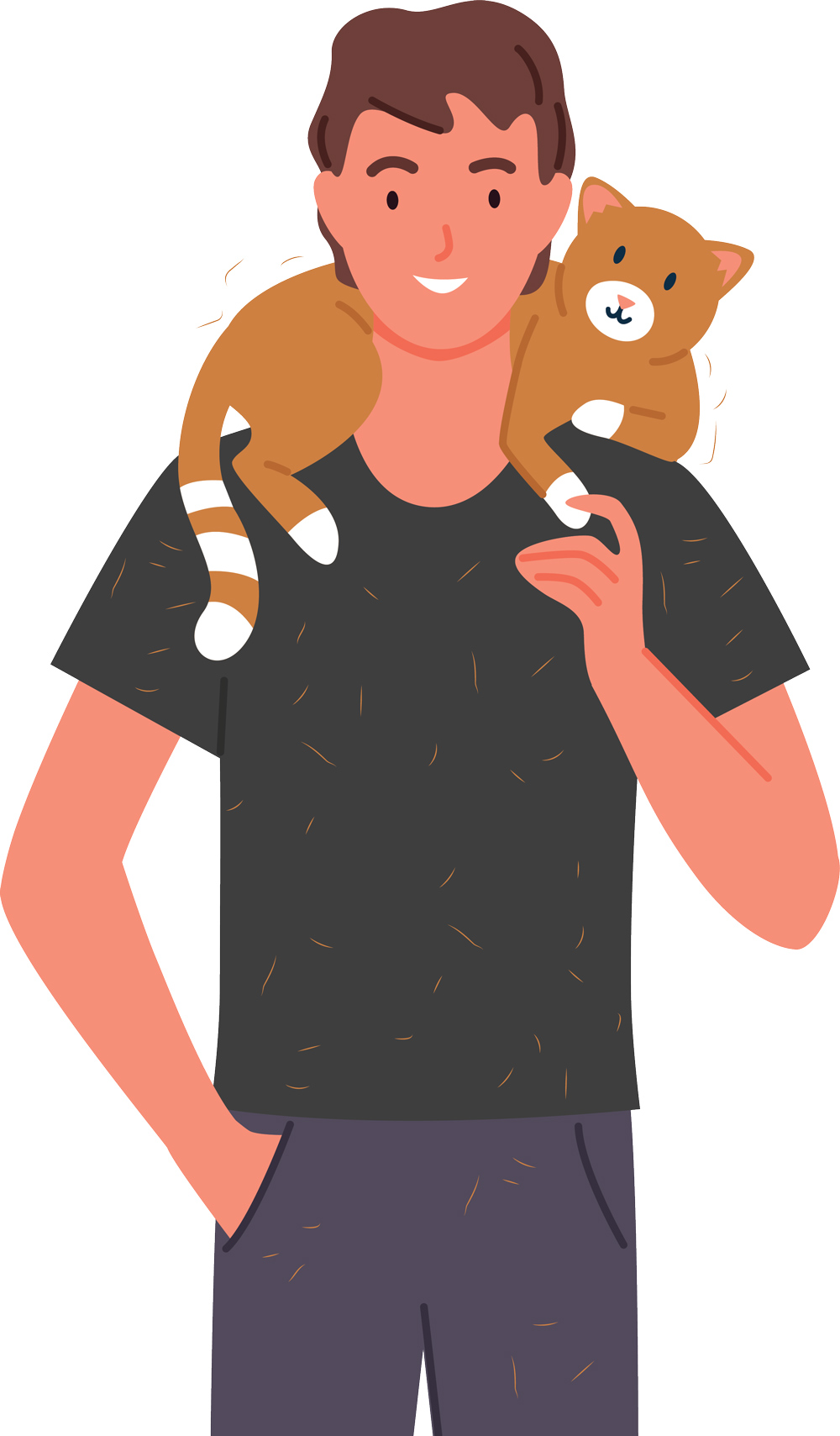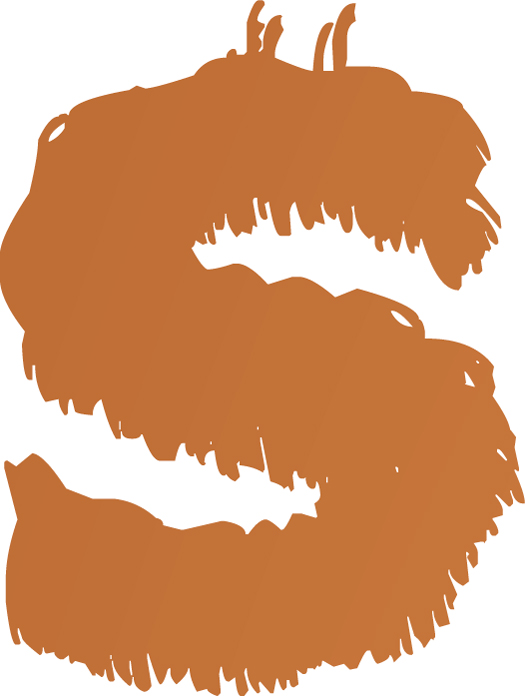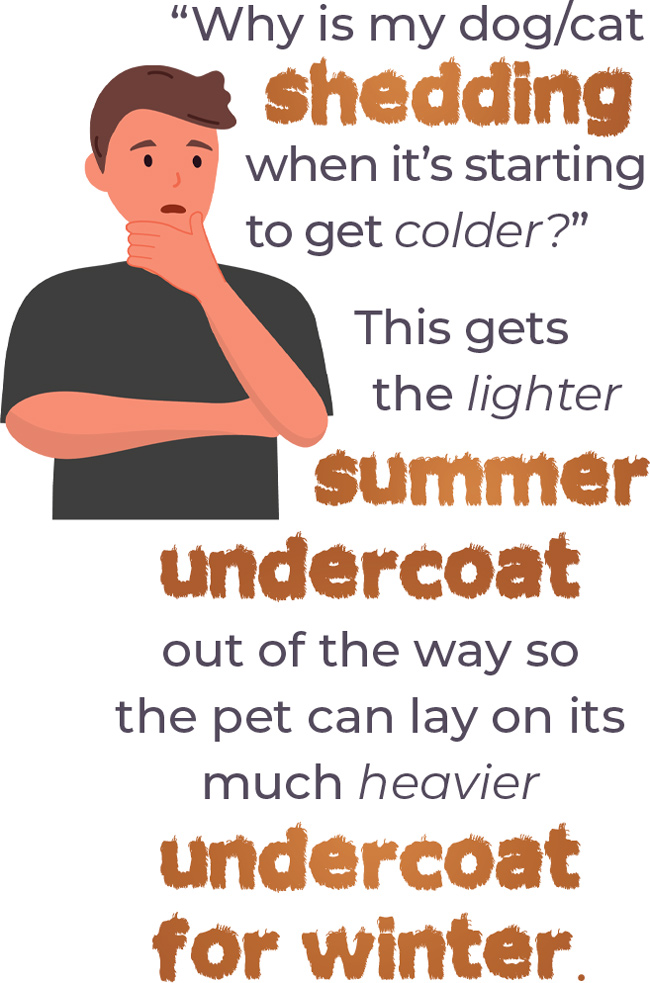

 hedding in dogs and cats is natural, normal and healthy. What’s more, it is highly functional, efficient, an easy form of self-care and environmentally beneficial—a true example of evolutionary genius! Ever notice how the big shed-off in dogs in the spring always happens when the birds are building their nests to lay their eggs?
hedding in dogs and cats is natural, normal and healthy. What’s more, it is highly functional, efficient, an easy form of self-care and environmentally beneficial—a true example of evolutionary genius! Ever notice how the big shed-off in dogs in the spring always happens when the birds are building their nests to lay their eggs?
Pet parents need to be taught that shedding is normal and natural, and hopefully by the person from which they acquire the pet. But since that is highly unlikely, they must hear it from you, their groomer. The skin and coat/hair/fur of a mammal determines so many factors about their lives, especially their health. For all of us mammals, the skin is the largest and most important organ in the body. Hair is also skin, just an extension of it, all made up of keratin proteins.
Maybe this is an old-school idea of mine, but we groomers used to teach our pet parents back in the day that they were expected to do some of the grooming tasks in-between visits to us groomers. Pet parents can and should be trained to be our partners in home care for these fur coats between grooms, and certainly also brushing the hair-type dogs to prevent matting, especially after they get wet.
Groomers should not reinforce the bad information that is sadly out there. We should provide good information. I believe that every client should get a ten-minute consultation on the dog or cat’s coat type and care when they first come to you, and at key times in their development. Educating them about the needs and functions of their pet’s coat is part of our job as professional pet groomers.
The other type, the secondary hairs (or “undercoat”), are the little fuzzy insulating hairs that shed the most and are not fully formed hairs. They do not have a medulla. They are just baby fuzz that comes in and falls out with the seasons to provide either insulation from the cold in the winter, or to allow air flow to the skin in the warm months while the primary hairs stay in place to reflect the sun away. Without a medulla, these undercoat hairs are not strong enough to be protective of the thin skin of a dog and the thinner skin of a cat. That is why fur-type dogs should never be clippered on their upper torso. Clippers do not discriminate between the protective and structural primary hairs that need to stay in place for years, are very slow growing with a long dormancy period and seldom need to be replaced.

All cats have pre-determined length, or “fur,” and are usually double-coated, meaning that they have both long-lasting primary hairs and often-shedding secondary or undercoat hairs. There are exceptions though, such as the rare “hairless,” or single-coated cats, like the Sphynx or Rex. And, there is even the triple-coated Siberian cat!
Fur-type dogs and cats should not be shaved, especially on their upper torsos or “jacket” area—the vitally protective area of the coat and skin specially evolved to keep the animal alive. Without their primary hairs or topcoat, their thin skin is highly susceptible to risk of cancer, parasites, bacteria, fungal infections and a host of other issues that occur when their thin skin is not covered. Trimming of the undercarriage of the dog or cat, and in between the back legs and under the tail, does not create the same problems.


The calendar hits two solstices each year, the shortest and longest daylight days of the year. The summer solstice in the northern hemisphere is the longest day of the year, around June 22nd. The winter solstice is around December 22nd, the shortest day of the year. For those in the southern hemisphere, like Australia, the pattern is reversed.
The heaviest shedding months for us in the northern hemisphere are April through June, when the heavy winter undercoat is blown off to lighten the load for the approaching summer. The somewhat lesser heavy shedding season of October through December is also something we can predict, planning our schedules and booking our clients accordingly.
I get asked every year by one client or another, “Why is my dog/cat shedding when it’s starting to get colder?” My answer is always to explain that this gets the lighter summer undercoat out of the way so the pet can lay on its much heavier undercoat for winter.
Dogs and cats lack sweat glands like the ones we have. Our sweat glands are exocrine, or “eccrine,” and put water out onto the skin. But dogs and cats have apocrine glands that release the moisture inside the hair follicle which the hairs then distribute, along with oils, around the coat and skin—another reason why shaving any dog or cat short is never a good idea. The hairs are needed to distribute the natural hydration and oils manufactured inside the follicle.
Dogs and cats do sweat, but only on the hairless parts of their skin like their noses and the pads of their feet. Dogs cool themselves through panting, which allows a heat exchange; heat goes out and cool air comes in. Cats can sweat a bit through their feet, but also only primarily have apocrine glands that emit moisture directly into their hair follicles.
Although humans, dogs and cats are all mammals with skin and hair, we humans are mostly skin and very little hair. We have thick skin and thin hair (some of us thinner than others). Dogs and cats have thinner skin and many more follicles, and more hairs per follicle than we do.
The stratum corneum is the outermost layer of the epidermis, or skin, in all mammals. For humans, it is made up of 10 to 30 thin layers of continually shedding, dead keratinocytes, or skin cells. Dogs have approximately only three to six layers of skin cells in their outermost protective skin layer, the stratum corneum. And cats’ skin is even thinner than dogs.
Nature has given dogs and cats all that fur to protect them, and in shedding, has created a perfect system that works to help them adapt to their climates. It is up to us humans to understand it and work with it—and it is up to groomers to explain that to every client.
